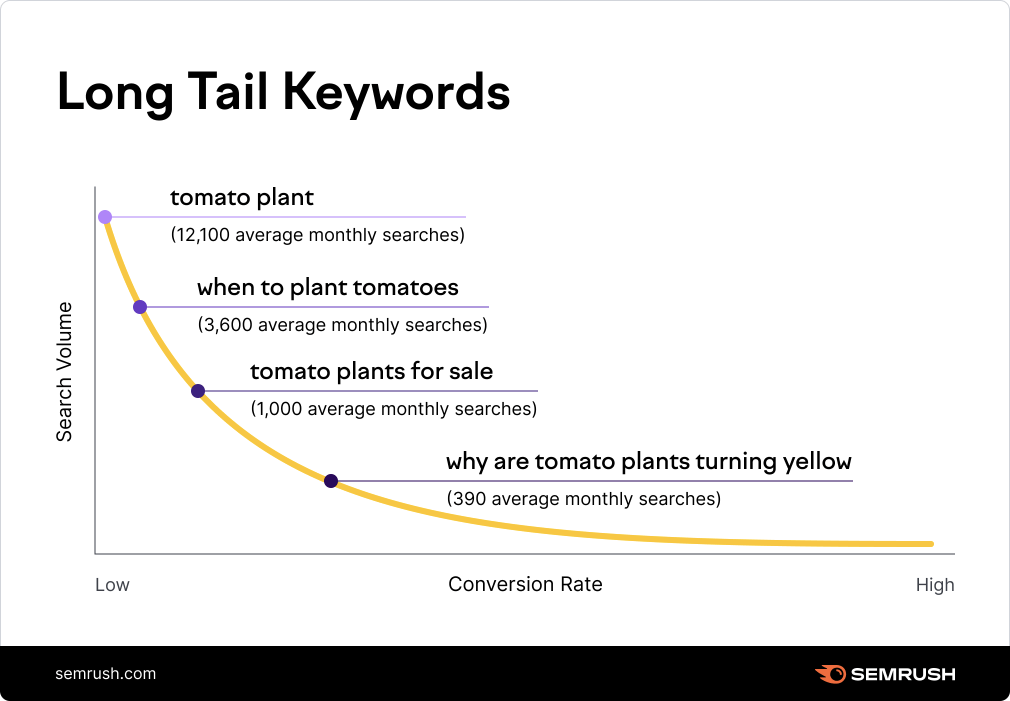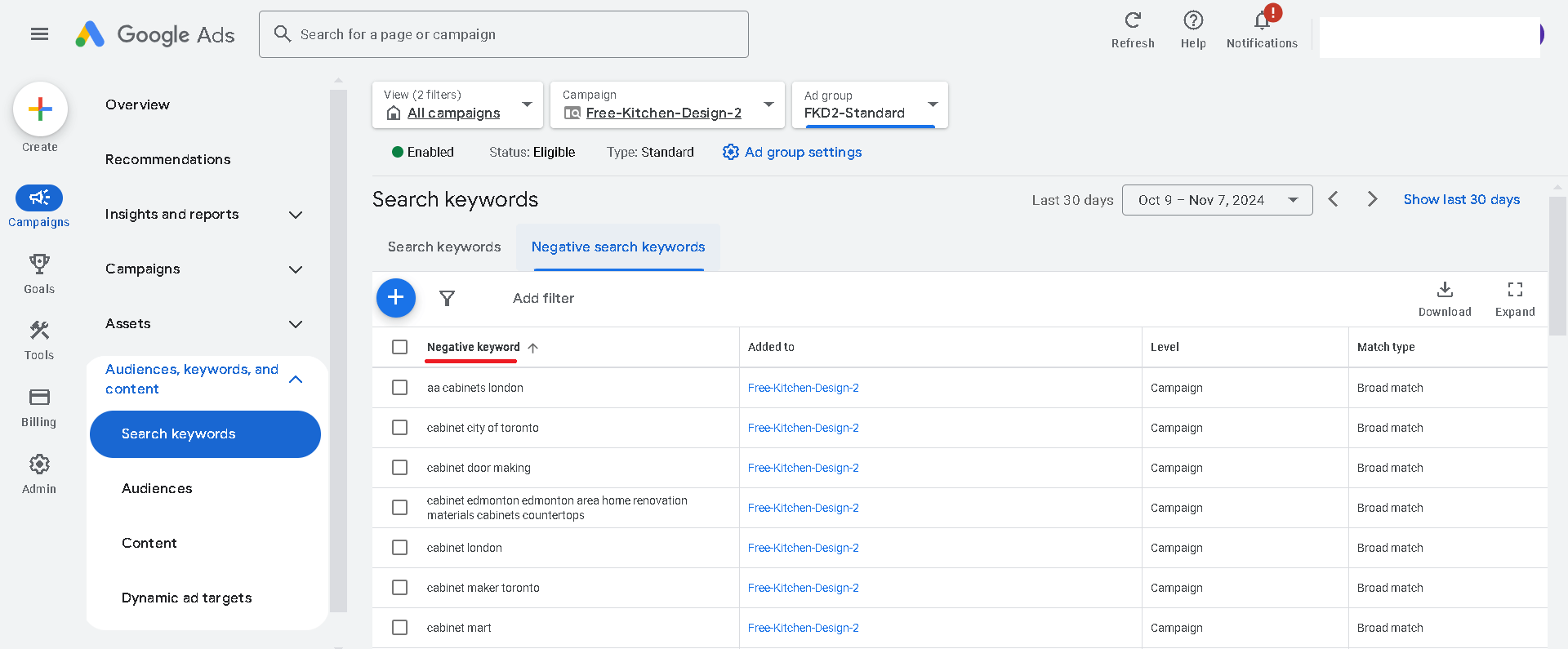Unlocking HVAC Leads with Google Ads: Are You Targeting the Right Keywords?
Targeting the right keywords is vital for your HVAC company because it directly impacts your ad relevance, cost efficiency, and overall campaign effectiveness, helping you reach the right audience and ultimately drive more business. In this next HomeRank Ads blog, we’ll help you make the most of your Google ads budget by providing 3 suggestions to help you target the right keywords in your HVAC campaigns in Google Ads.
1) Research Local and Service-Specific Keywords
2) Incorporate Long-Tail and Intent-Driven Keywords
3) Refine Your Campaign With Negative Keywords and Ongoing Optimization
We’ve spent time in the blog below explaining how you can target the right keywords yourself, but HomeRank Ads can do all of this for you and has years of experience in the industry. Contact HomeRank Ads to learn more about the services they offer and see improvements in your leads through strategic and efficient Google Ads.
Are you targeting the right keywords in your Google Ads? HomeRank Ads can help.
3 Tips for Targeting the Right Keywords
Targeting the right keywords in your Google Ads campaigns is essential for several key reasons including a) increased relevance and quality leads, b) better return on investment (ROI) and ad spend efficiency, and c) improved ad rank and lower cost-per-click (CPC). Here are some more details as to why.
Increased Relevance and Quality Leads
When you choose keywords that align closely with your potential customers' search intent, your ads are more likely to reach users who are actively looking for services like yours. For an HVAC company, using relevant keywords such as "emergency furnace repair" or "HVAC maintenance near me" can attract users who are ready to make a service decision, leading to higher-quality leads that are more likely to convert into customers.
Better ROI and Ad Spend Efficiency
Right keywords reduce wasted ad spend on clicks from users who aren’t interested in your services. By targeting high-intent keywords (e.g., "AC installation cost" or "24/7 HVAC service"), you can ensure your budget is spent on attracting serious buyers rather than casual browsers, thus improving your return on investment (ROI).
Improved Ad Rank and Lower CPC
Google rewards ads that are highly relevant to the searcher’s intent with a higher Quality Score, which can result in a better ad position at a lower cost-per-click (CPC). When you target relevant keywords, your ad quality improves, and you’re more likely to achieve a higher ranking on Google without needing to outbid competitors significantly.
Now that you understand why targeting the right keywords is so important, let’s look at how to do it! To target the best keywords for Google Ads and drive quality leads to your HVAC company, follow these three steps:
1) Research Local and Service-Specific Keywords
In your research, try keyword planners like this free one from Ahrefs!
In digital advertising, selecting the right keywords is essential for driving targeted traffic, and local and service-specific keywords are particularly effective for HVAC businesses. By focusing on keywords that include your location and describe your specific services, you can attract potential customers who are actively looking for HVAC solutions in your area. This approach helps ensure that your ads reach users who are ready to engage with a local provider and have a higher likelihood of converting. By understanding and using local and service-focused keywords, you align your advertising strategy with the needs of your audience, resulting in more efficient and impactful ad campaigns. Let’s look at the following pointers.
Localize Keywords
Since HVAC services are often location-specific, target keywords that include your city or neighbourhood (e.g., “HVAC repair in Toronto” or “air conditioning installation Vaughan”). Local keywords will help attract leads specifically from your service area. What are your service areas?
Use Keyword Research Tools
Utilize tools like Google Keyword Planner, Semrush, or Ahrefs to identify HVAC-related keywords with high search volume and lower competition. Look for terms that reflect high purchase intent, like “emergency HVAC repair” or “furnace replacement near me,” which attract leads ready to make decisions.
Analyze Competitor Keywords
Use competitor research tools to see which keywords successful HVAC companies in your area target. This can reveal additional terms that may convert well.
Overall, with careful planning and analysis of keyword volume and competition, you’ll be more successful in targeting the right keywords.
2) Incorporate Long-Tail and Intent-Driven Keywords
The above diagram from Semrush helps demonstrate the difference between short and long-tailed keywords.
Next, we suggest using long-tail and intent-driven keywords as this is an effective way to capture users who are closer to making a purchase decision. Let’s look at these 2 suggestions in further detail below:
Focus on Long-Tail Keywords
Long-tail keywords are more specific phrases, like “24-hour furnace repair in Toronto,” which may have lower search volumes but often attract higher-intent customers. These keywords often have lower competition and indicate a user closer to making a purchase decision. Your ad can attract customers looking for specific HVAC services, not just general information. This will help filter out general browsers and reach those with a clear need for your HVAC services.
Address Intent
Focusing on intent-driven terms, you can align your ads with the specific needs of your audience, ensuring your campaign targets leads who are ready to engage with your business, ultimately improving conversion rates and maximizing ad spend efficiency.
Choose keywords that align with the user’s intent, especially those indicating the need for immediate service or consultation. For HVAC, these can include words like the following:
“affordable”
“emergency”
“certified”
“same-day service”
As with long-tail keywords, intent-driven keywords also help filter out users who are simply browsing.
Incorporating long-tail and intent-driven keywords helps focus your ads on users with specific needs, improving relevance and attracting higher-quality leads ready to convert.
3) Refine Your Campaign With Negative Keywords and Ongoing Optimization
Above you can see an example of a list of negative keywords.
Refining your campaign with negative keywords and ongoing optimization is essential for minimizing irrelevant clicks and ensuring your ad budget is spent effectively. Here is an explanation of these two tips:
Add Negative Keywords
Negative keywords prevent your ad from showing up for irrelevant searches. They help exclude terms that attract unqualified leads (e.g., “DIY HVAC repair”), ensuring your ads appear only in searches that align with your services. For example, if you don’t offer commercial HVAC services, you could add “commercial” as a negative keyword. Similarly, terms like “DIY” or “free” can help you avoid irrelevant clicks from users who aren’t looking to hire a professional.
Monitor and Adjust Regularly
Continuously analyze the performance of keywords in your campaigns. Identify which ones generate leads and conversions and refine your keyword list accordingly. High-performing keywords can be bid on more aggressively, while underperforming terms can be paused or replaced.
Through the addition of negative keywords, regular monitoring, and strategic adjustments, you can continuously improve ad performance, focusing on high-converting keywords while adjusting bids or pausing underperforming ones. This strategic refinement keeps your campaign relevant, reduces wasted spend, and boosts the likelihood of attracting high-quality leads.
By focusing on localized, long-tail, and intent-driven keywords, and refining them based on performance and negative keywords, you can better target HVAC customers ready to hire your services.
You can implement these suggestions yourself, or you can let HomeRank manage your Google Ads for you. HomeRank offers ad creation and management services for HVAC and home improvement companies. With over 15 years of marketing experience, we can help you focus on serving customers in-person while we do the marketing online.
Reduce the stress and frustration of figuring out Google Ads on your own and get support from HomeRank.






